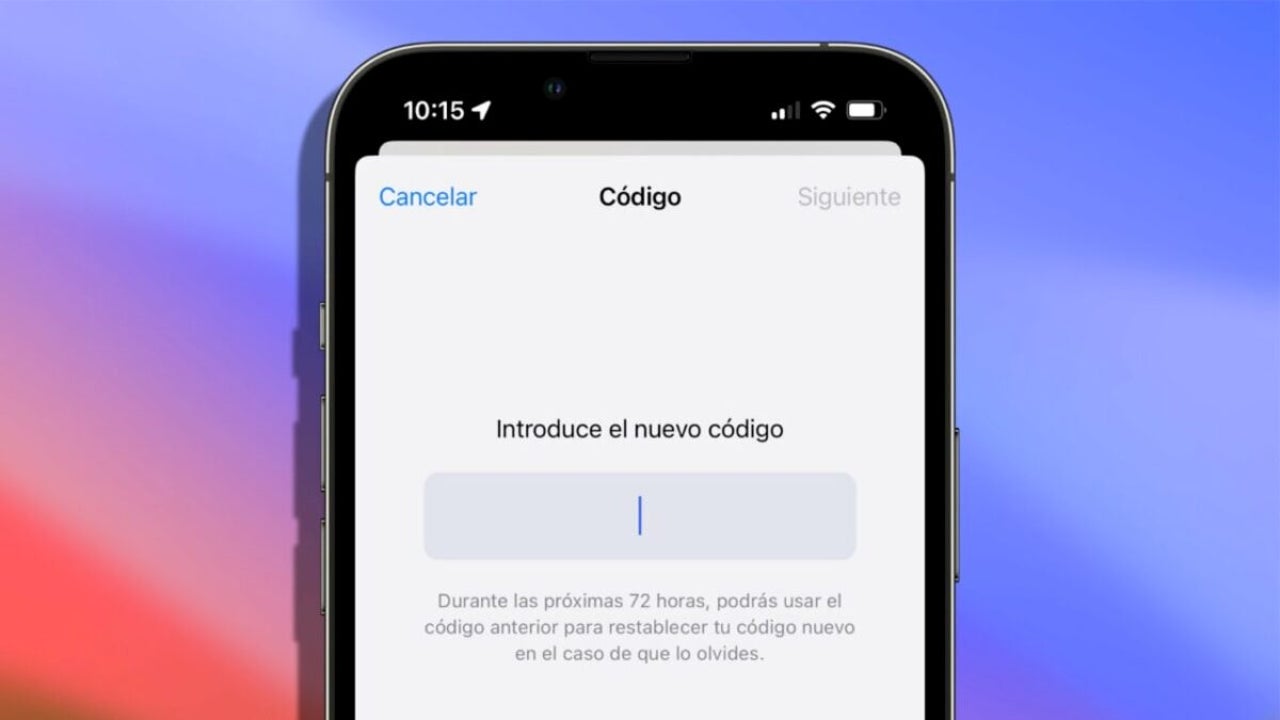News
No More Lock Code Panic: iOS 17 Introduces a Hassle-Free Recovery System
A security system to prevent forgetfulness.

- June 16, 2023
- Updated: July 2, 2025 at 1:55 AM

The lock code of our iPhone is of utmost importance. With it, we can unlock the phone, make payments with Apple Pay, and even access our passwords for apps and services. Keeping it safe, secure, and well-memorized is essential for the security of our devices.
Part of that involves changing it from time to time and, above all, using a secure code—preferably using alphanumeric codes instead of just numbers. Apple is aware that we should change the code periodically, and that’s precisely why they have added a new feature in iOS 17 that allows us to change it again if we forget it right after changing it.
An excellent resource in case we forget the new code
Typically, the system works as follows. We have a code on our iPhone or iPad, we change it, and from then on, we must use the new one. This may involve writing down the new code on a piece of paper, for example, to ensure that we don’t forget it. Now, with iOS 17, the situation changes slightly. Yes, just like before, when we change the code, we must start using the new one immediately. However, after a certain period following the change, we can use the previous code to set up a new one again.

iOS 17 and iPadOS 17 introduce the ability to reset the new code on our iPhone or iPad using the previous code within 72 hours of the change. This system is activated when an incorrect code is entered, and it offers us the option to make a new change.
After several unsuccessful attempts to enter the code, an option appears at the bottom of the screen that says “Forgot Code?”. Upon selecting it, we are taken to a new screen with the option “Try Reset Code”. This option allows us to enter the old iPhone lock code and create a new one.
With all possibilities considered in detail
While it may not be as common on the iPhone, sharing a device and having multiple people in the household know the code is more typical on the iPad. In light of this perspective, changing the code to prevent, for example, young children from accessing a work device is crucial. Therefore, for security reasons, the system includes an additional option within the Settings app that allows us to immediately expire the previous code.
Thus, its validity is canceled, and it cannot be used to reset the new lock code. However, the rest of the recovery options remain available. These are the same options that would be available after the three-day period since the code change. Let’s remember that in case of completely forgetting the code for an iPhone or iPad, the only option we have is to reset it entirely. This process can be a bit intimidating, but after restoring the backup that can be automatically done in iCloud, our device will have a new code and all the information in its place.
It’s important to note that we are currently talking about the first beta of iOS 17 and iPadOS 17, so the system may evolve. In fact, Craig Federhigi himself commented a few days ago that Apple is still looking for a way to address the fact that the iPhone code can be used to change the password for our Apple ID.
Meanwhile, the new password recovery system in iOS 17 aims to greatly simplify the code management process without compromising security. It is one of the many new features that iOS 17 brings, such as the eye care function, Apple’s generative AI speaking with our voice, or the ability to download maps for offline use, just to name a few. All of these details make iOS 17 an update to seriously consider.
Some of the links added in the article are part of affiliate campaigns and may represent benefits for Softonic.
Architect | Founder of hanaringo.com | Apple Technologies Trainer | Writer at Softonic and iDoo_tech, formerly at Applesfera
Latest from David Bernal Raspall
You may also like
 News
NewsThis series starring Kristen Bell and Adam Brody returns to Netflix with its second season
Read more
 News
News8,424 cryptocurrency wallets are stolen due to a cybersecurity issue
Read more
 News
NewsIf you're missing wacky humor in Borderlands 4, this modder is the reason it hasn't been there and for it to come back
Read more
 News
NewsIt’s the new French series that everyone is talking about and it will premiere very soon on Apple TV+
Read more
 News
NewsThe Yakuza saga confirms a remake of its most polarizing installment among fans
Read more
 News
NewsOne of the great classics of the 2000s video game will receive a remaster worthy of its legend
Read more